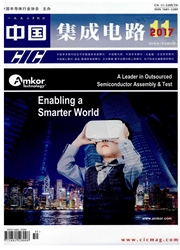

 中文摘要:
中文摘要:
混合形态学在的控制多尺度为优化塑料的力量变换效率(PCE ) 是批评的太阳能电池。更好在器官的光电的设备理解光敏的层的物理,获得形态学和相应电子性质的理解是必要的。此处,我们报导在 nanoscale 之间的关联体积异质接面(BHJ ) 的结构的、电的性质太阳能电池和退火导致 PCE 变化。我们证明 BHJ 太阳能电池的 PCE 戏剧性地被改进(从 1.3 % ~ 4.6 %) 旁边热退火,它源于 P3HT 为贯穿的网络的水晶的叠和 PCBM 聚集。为退火导致 photovoltage 和象起始的增加在场的 PCE 进化的类似的趋势与退火的时间和温度由减少列在后面。慢慢地然后突然地,在一样的变化以后,点为 photovoltage 和 PCE 观察了的表面粗糙增加。在电的力量显微镜学的阶段图象显示为贯穿的优化 P3HT 和 PCBM 结晶化也就分光镜的结果而言联网形成。从在表面 photovoltage,混合形态学,和 PCE 之间的关联,我们建议在不同退火下面说明电影结构和它的进化的一个模型调节。这个工作将有益于形态学的更好的设计和太阳能电池的本地电的性质为改进 PCE 的活跃的层。
 英文摘要:
英文摘要:
Control of blend morphology at multi-scale is critical for optimizing the power conversion efficiency (PCE) of plastic solar cells. To better understand the physics of photoactive layer in the organic photovoltaic devices, it is necessary to gain understanding of morphol- ogy and the corresponding electronic property. Herein we report the correlation between nanoscale structural, electric properties of bulk heterojunction (BHJ) solar cells and the annealing-induced PCE change. We demonstrate that the PCE of BHJ solar cells are dramatically improved (from 1.3 % to 4.6 %) by thermal annealing, which results from P3HT crystalline stacking and the PCBM aggregation for interpenetrated network. The similar trend for annealing- induced photovoltage and PCE evolution present as an initial increase followed by a decrease with the annealing time and temperature. The surface roughness increase slowly and then abruptly after the same inflection points observed for photovoltage and PCE. The phase images in electric force microscopy indicate the optimized P3HT and PCBM crystallization for interpenetrating network formation considering the spectroscopic results as well. From the correlation between surface photovoltage, blend morphology, and PCE, we propose a model to illustrate the film structure and its evolution under different annealing conditions. This work would benefit the better design and optimization of the morphology and local electric proper- ties of solar cell active layers for improved PCE.
 同期刊论文项目
同期刊论文项目
 同项目期刊论文
同项目期刊论文
 Growth Mechanism for Controlled Synthesis of Metal Nanotube and Nanowire Arrays Using Anodic Aluminu
Growth Mechanism for Controlled Synthesis of Metal Nanotube and Nanowire Arrays Using Anodic Aluminu Molecularly tuned peptide assemblies at the liquid-solid interface studied by scanning tunneling mic
Molecularly tuned peptide assemblies at the liquid-solid interface studied by scanning tunneling mic Combined SPM Investigation on the Interfacial Structure of a Phthalocyanine/Conjugated Polymer Compo
Combined SPM Investigation on the Interfacial Structure of a Phthalocyanine/Conjugated Polymer Compo Determination of relative binding affinities of labeling molecules with amino acids by using scannin
Determination of relative binding affinities of labeling molecules with amino acids by using scannin Single Molecule Studies of Cyclic Peptides Using Molecular Matrix at Liquid/Solid Interface by Scann
Single Molecule Studies of Cyclic Peptides Using Molecular Matrix at Liquid/Solid Interface by Scann 期刊信息
期刊信息
